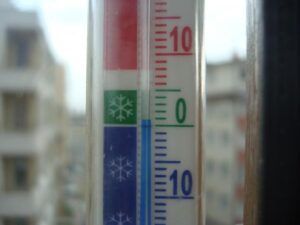 As frigid temperatures sweep across the Midwest, being aware of the dangers of freezing weather is important, especially for those who work outside. Workers who are exposed to extreme cold or cold environments are more susceptible to cold stress.
As frigid temperatures sweep across the Midwest, being aware of the dangers of freezing weather is important, especially for those who work outside. Workers who are exposed to extreme cold or cold environments are more susceptible to cold stress.
Much like heat stress, which is an affliction many people are familiar with and can diagnose when symptoms appear, cold stress occurs when the opposite type of weather conditions are present and is something that may not be as well known.
Cold stress is an umbrella term describing the type of occupational illness and injuries that can occur during frigid weather conditions. Cold stress can cause results in afflictions like hypothermia, frostbite, trench foot, and chilblains.
Here are some quick tips to avoid cold stress:
- Wear appropriate clothing.
- Wear several layers of loose clothing to provide better insulation.
- Avoid tight clothing, it reduces blood circulation.
- Keep your range of motion available, clothing may restrict movement.
- Protect your ears, face, hands, and feet.
- Use waterproof footwear.
- Wear a hat, it reduces the amount of body heat that escapes from your head.
- Utilize warm locations during work breaks.
- Bring a fresh pair of clothing, gloves, hats, jackets, etc.
- Include a thermometer and hot pack in your first aid kit.
- Keep bare skin away from metal surfaces.
- Monitor the physical conditions of yourself and coworkers.
The Board of Certified Safety Professionals (BCSP) partners with the National Institute for Occupational Safety and Health (NIOSH) to share informative resources on cold stress and other safety issues on our Partners webpage.
